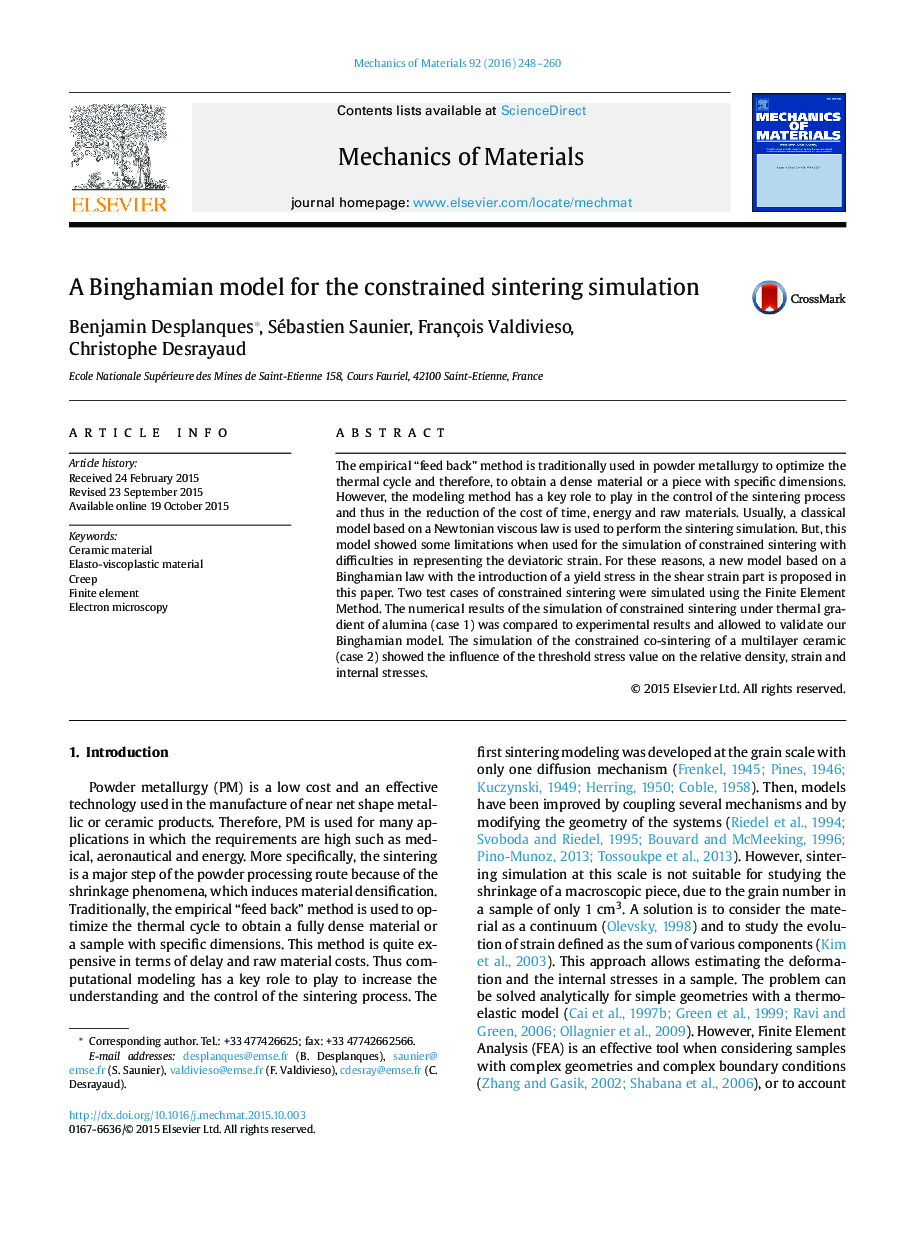| Article ID | Journal | Published Year | Pages | File Type |
|---|---|---|---|---|
| 797495 | Mechanics of Materials | 2016 | 13 Pages |
•A model with a Binghamian law is proposed to model the constrained sintering.•The model is validated with an experimental/simulation comparison.•The Binghamian model is more suited than a Newtonian model.•The yield stress value is a prevalent parameter for the simulation accuracy.
The empirical “feed back” method is traditionally used in powder metallurgy to optimize the thermal cycle and therefore, to obtain a dense material or a piece with specific dimensions. However, the modeling method has a key role to play in the control of the sintering process and thus in the reduction of the cost of time, energy and raw materials. Usually, a classical model based on a Newtonian viscous law is used to perform the sintering simulation. But, this model showed some limitations when used for the simulation of constrained sintering with difficulties in representing the deviatoric strain. For these reasons, a new model based on a Binghamian law with the introduction of a yield stress in the shear strain part is proposed in this paper. Two test cases of constrained sintering were simulated using the Finite Element Method. The numerical results of the simulation of constrained sintering under thermal gradient of alumina (case 1) was compared to experimental results and allowed to validate our Binghamian model. The simulation of the constrained co-sintering of a multilayer ceramic (case 2) showed the influence of the threshold stress value on the relative density, strain and internal stresses.
